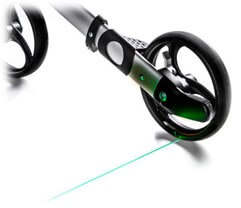Teilen:
Take it offline!
This Education in Motion resource is also available as a printable PDF.
Download PDF
Parkinson's disease is a chronically progressive, neurodegenerative disease. Due to a disturbance in the neurotransmitter balance in the basal ganglia, motor output is altered and presents in a variety of movement disorders1.
Symptoms typical of Parkinson's disease include stiff muscles (rigor), movement disorders (akinesia, hypokinesia, bradykinesia), uncontrollable tremors and a stooped posture; all contributing towards reduced balance and function. Additional symptoms can include speaking and swallowing difficulties, disturbances in blood pressure, digestion, sleep, and mental impacts including depression and dementia 2.
“To delay the clinical progression of movement limitations, staying active safely is essential”
To address these presentations, a rollator is commonly prescribed for falls prevention and to prevent secondary effects of advanced age, inactivity or previous falls 3. Rollators are lightweight, often under 8 kgs, and are foldable for easy storage. It’s four 20cm wheels expands the user’s base of support to improve user balance, and they can be controlled safely using the hand brakes. Most rollators offer a seat to support users resting when out in the community and a basket to carry personal items with ease.
These features are especially pertinent in Parkinson’s populations where postural instability and muscle stiffness contribute towards reduced balance and fatigue 4. Often, this deters individuals from being active and engaging with family and friends, shrinking their support networks when they need it most.
To delay the clinical progression of movement limitations, staying active safely is essential. A typical rollator compensates for balance impairments generally. The Gemino 30 Parkinson specifically addresses Parkinsonian movement disorders to encourage safe movement – with confidence.
LASER CUEING
Akinesia, the so-called "freezing", often causes difficulty initiating or completing purposeful movement 5. The Gemino 30 Parkinson rollator has built-in laser cueing to facilitate stepping into a flowing gait pattern. The transparent line serves as a guide for longer and larger step length to challenge akinesia, overcome freezing and promote continued stepping.

Visualisation of the laser line, activated using a button on the push handles.
SLOW DOWN & REVERSING BRAKE SYSTEM
If the user presents with hypokinesia, it may manifest as rapid jerks and/or shuffling gait. They often find themselves walking in faster, smaller steps without adequate foot clearance, becoming a tripping hazard. As the disease progresses, this can culminate in recurrent falls.
A standard rollator that isn’t designed to address these balance deficits can move away from the user and predispose them to a near-miss or fall.
The Slow-Down brake used in the Gemino 30 Parkinson rollator provides protection during hypokinesia as well as on downhill slopes by keeping the user close to the rollator. The adjustable resistance works to achieve a smoother gait pattern at a steady pace, at home and out in the community 6.
Additionally, the Reversing Brake System stops the rollator as soon as the brakes are released for safety during bouts of freezing. If there is a risk of unsteadiness, the rollator cannot slide away, providing support when it’s needed it most.
Remember, during equipment prescription, it is important to consult a qualified allied health professional for clinical diagnosis and to best determine the product for your specific needs.